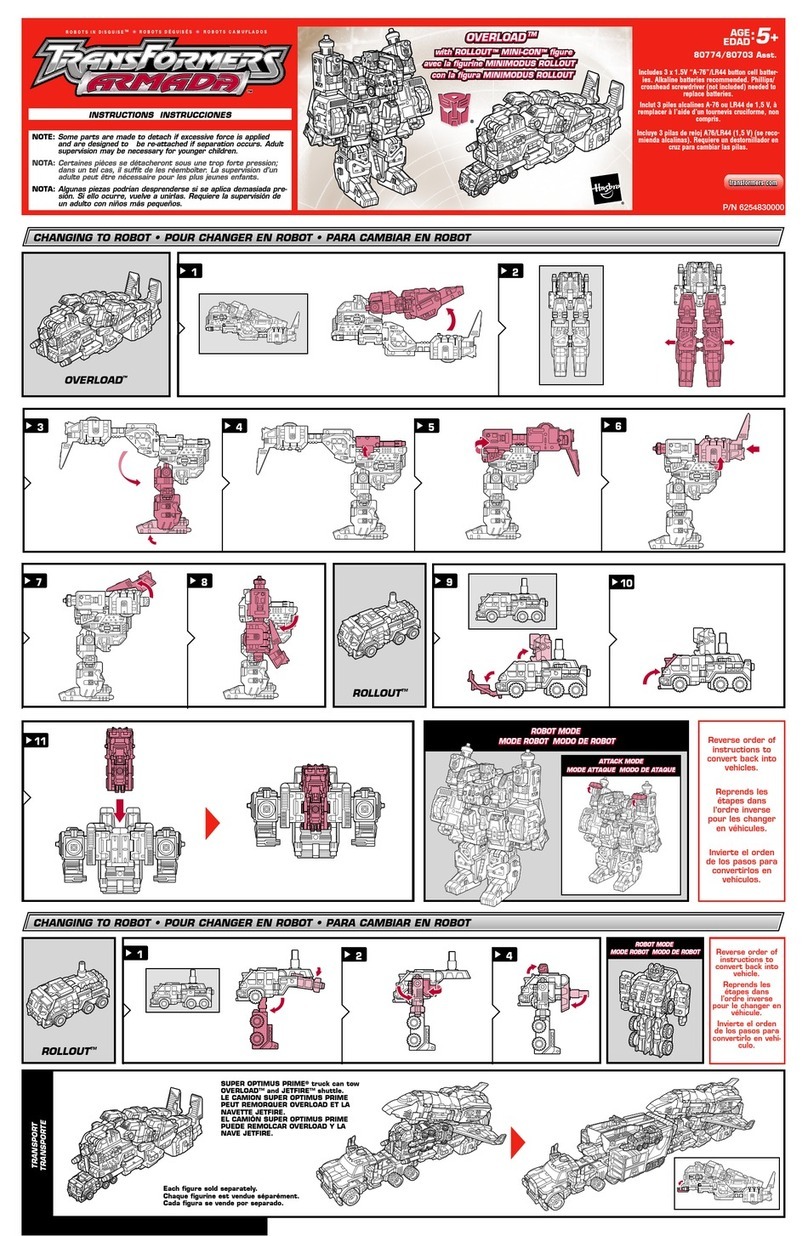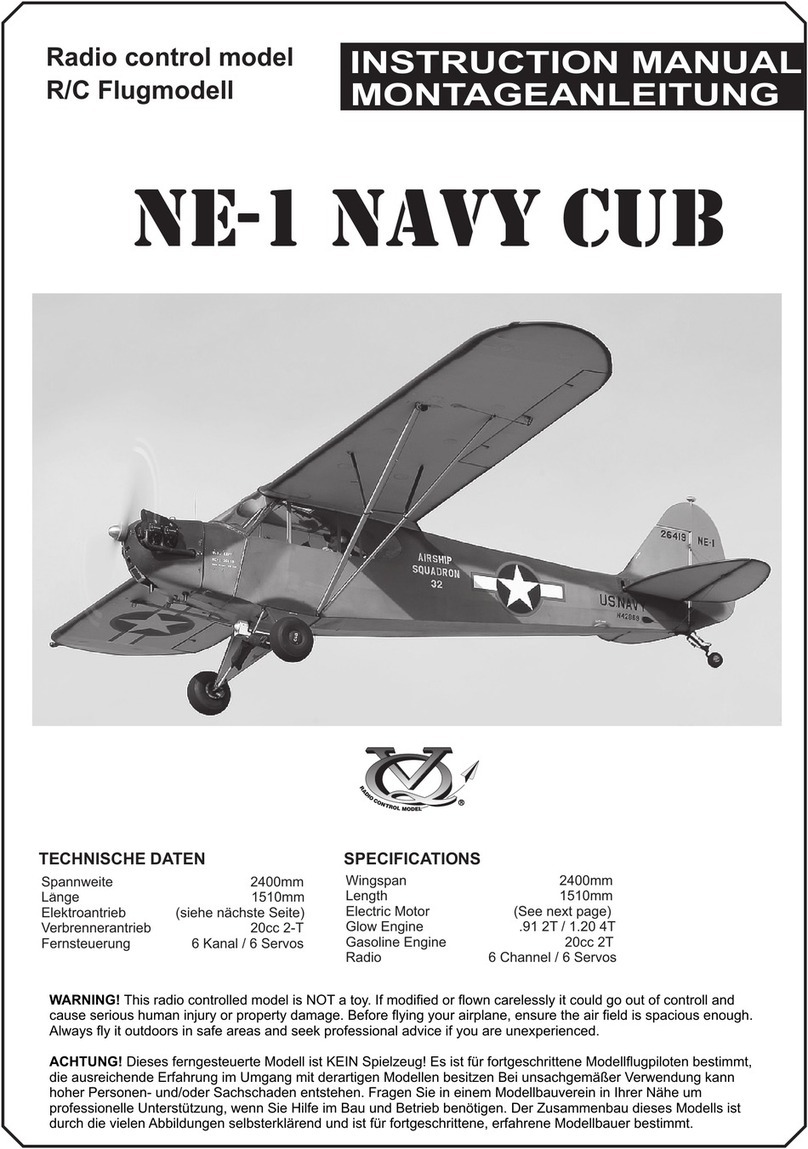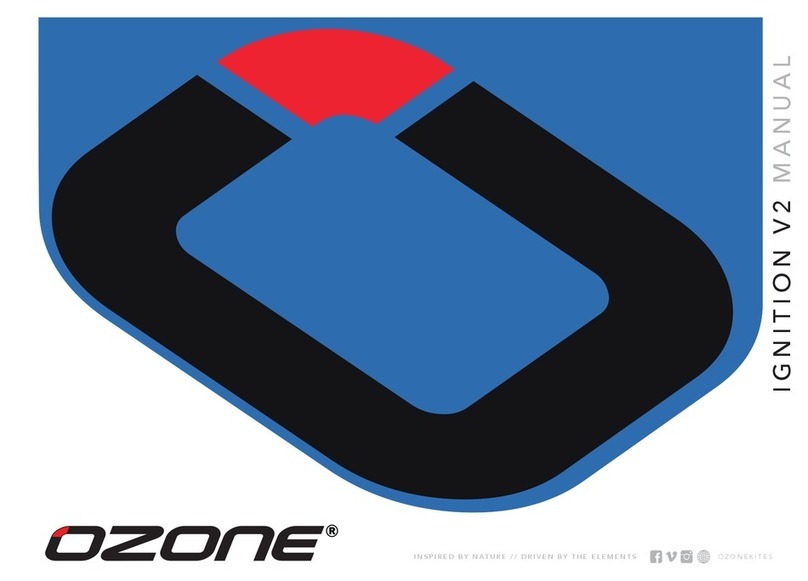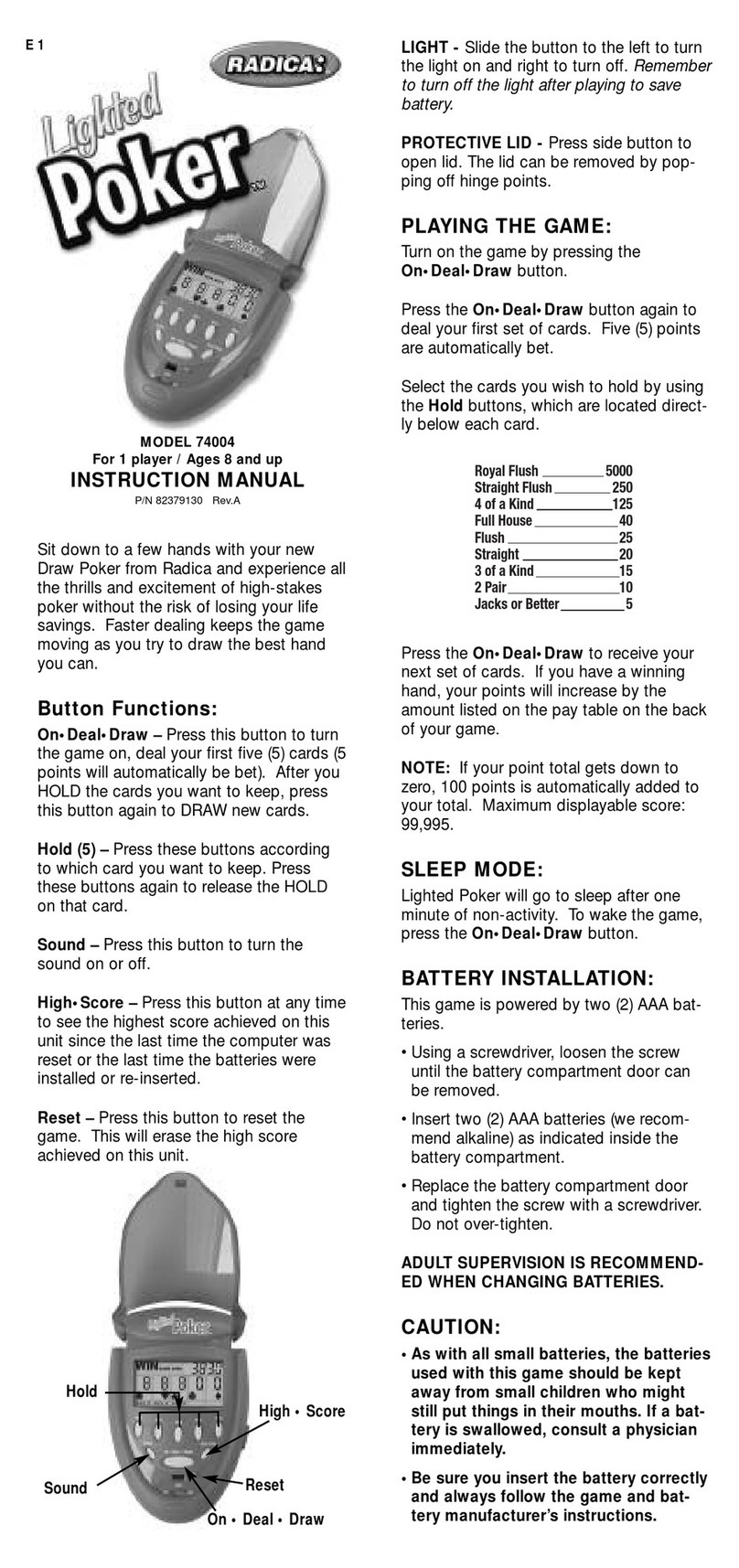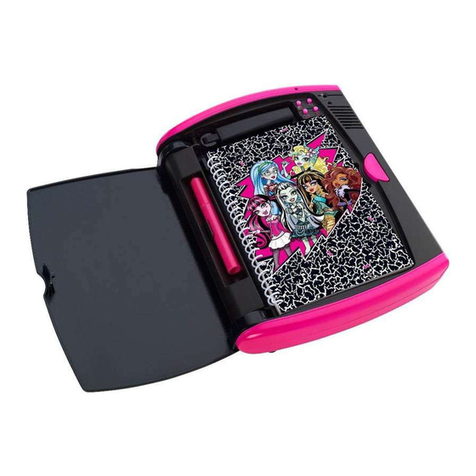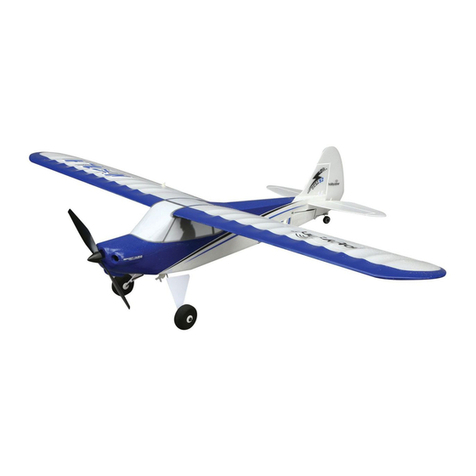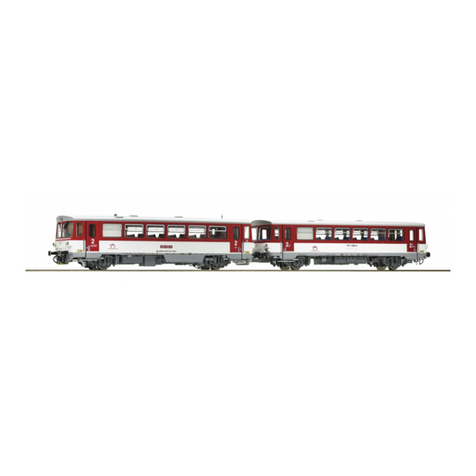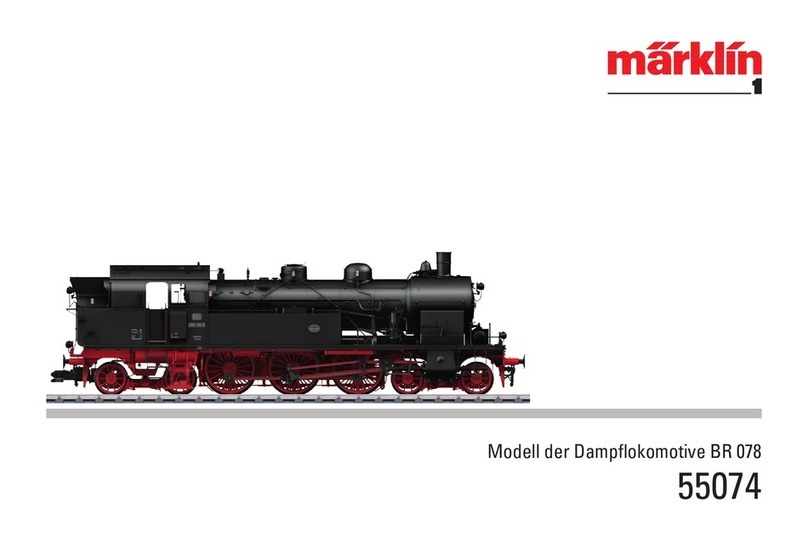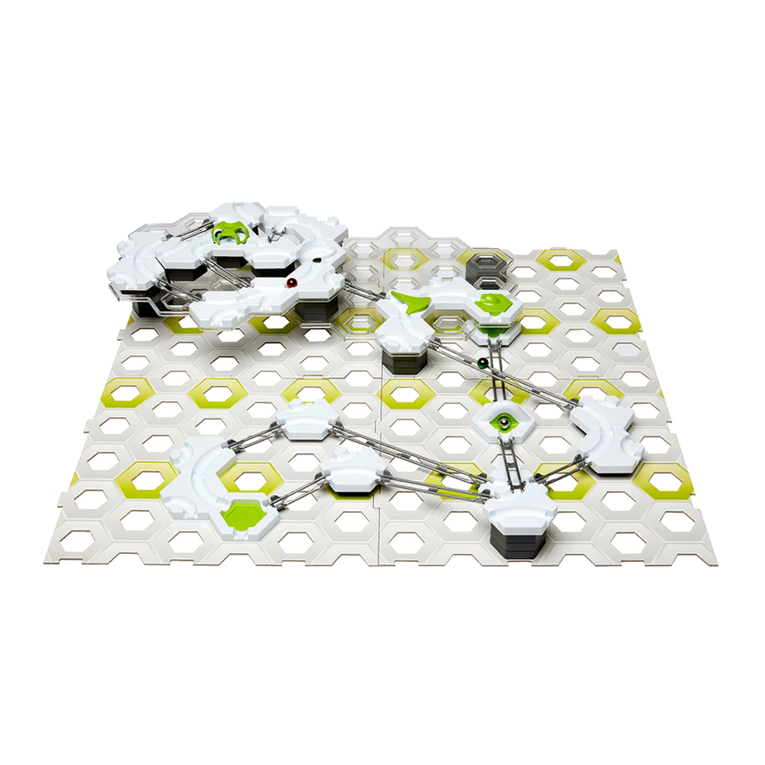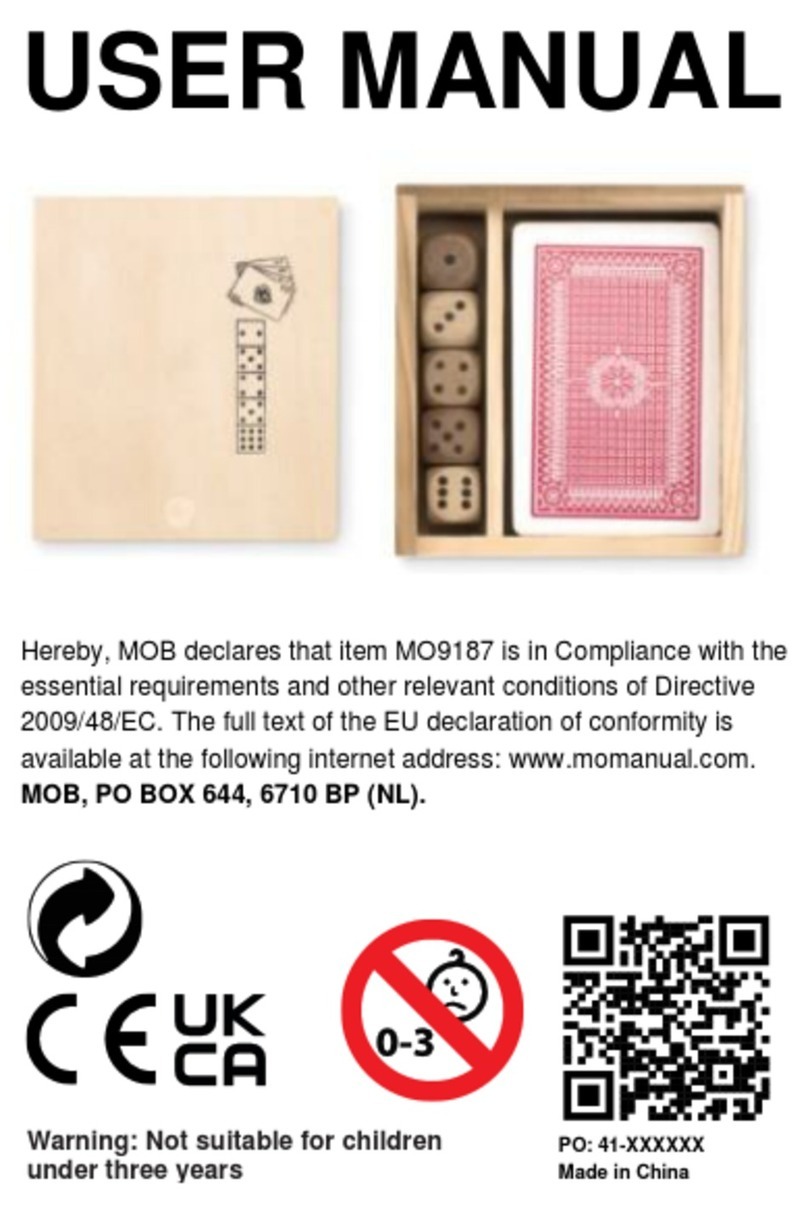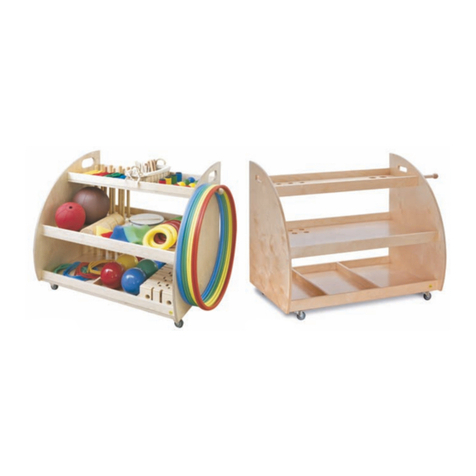Giant Leap Rocketry Firestorm User manual

INSTRUCTION MANUAL
Firestorm
GIANT LEAP ROCKETRY, LLC
Copyright 2006 - 2017 Giant Leap Rocketry, LLC
2831 SW Cornelius Pass Road
Hillsboro, Oregon 97123
!

FIRESTORM 54mm
Thank-you and congratulations on pur-
chasing this beautiful high powered
rocket from Giant Leap Rocketry.
-The GLR Team-
THE FIRESTORM IS THE PERFECT DUEL DEPLOY ROCKET!!!
EASY TO BUILD AND PUNCHES A GIANT HOLE IN THE SKY
PLEASE BE AWARE THAT THE FIRESTORM CAN (DEPENDING ON THE MOTER CHOSEN) GO OVER 6000
FEET; THEREFORE A TRACKING SYSTEM IS RECOMMENDED FOR A SUCCESSFUL RECOVERY.
At Giant Leap Rocketry, LLC hope you enjoy this rocket. The FIRESTORM is carefully engineered to make this
rocket high performance on the one hand, yet efficient to build on the other. We recommend that you take your time,
learn and enjoy. The FIRESTROM series is another in a long line of high quality kits from Giant Leap Rocketry, LLC.
!

FIRESTORM 54
We provide more details to help with your rocketry education
The FIRESTORM 54 is a perfect rocket for a
level 2, duel deploy launch. The FIRESTORM
is a 54mm minimum diameter rocket. This
means that the airframe is the motor mount tube
as well. The FIRESTORM is versatile as well:
you can fly FIRESTORM as a single OR duel
deploy rocket. Flying as a duel deploy typi-
cally allows the rocket to descend until the last
few hundred feet, at which time a second para-
chute is deployed slowing the the decent of
FIRESTORM to a safe decent speed. FIRE-
STORM is also adaptable down to 38mm motor
using the optional GLR Slimline 38mm motor
adaptor or even to a 29mm motor using BOTH
the GLR Slimline 38mm and 29mm motor
adapters (ordered separately From GLR). The
FIRESTROM can be flown on a variety of mo-
tors to extremely high altitudes. Be certain
2
!

your center of gravity (CG) is at least 1.5 body
diameters or more forward of the center of pres-
sure (CP) when the rocket is fully loaded and
ready for flight!
This is critically important or the
rocket will not be stable in flight.
For example, if your rocket is 1.5” in diameter,
then the CG should be at least 3” forward of the
center of pressure. We provide you with the CP
distance from the tip of the nosecone. As long
the design remains the same as provided by
GLR, the CP won’t change; but, if you modify
the length of the rocket you will need to deter-
mine the CP again for yourself. The CG de-
pends on the weight distribution, which can
change depending on your motor choice or
other items that change the weight of the
rocket. You can find the distance of the CG by
balancing the rocket on your finger. If the CG
is too far back, add nose weight. All measure-
ments must be done with a “launch ready”
rocket. This means your rocket is loaded with a
motor, recovery components and any electron-
ics or other accessories you plan to use during
flight. Remember, during launch, the recovery
hardware may shift aft, thus shifting the CG to
an unstable condition. Be sure to allow for this
before flying by loading your recovery compo-
nents aft in order to properly check CG. Note:
Heavier motors shift the CG aft, requiring you
to add nose weight. Be sure to check the CG lo-
cation prior to launch!!
Specifications:
Dry Wt. Mass (no motor load) 71.5 oz. (Please
allow for slight variation in weight due to differ-
ence in epoxies and paint thickness).
Length: 71.5”
Outside Diameter O.D. 2 ¼”
Inside Diameter I.D. 2 1/16 ”
CP=61.7” aft from nosecone tip
CG should be less than 58” aft of nosecone tip
Motor Mount: 54mm (29&38 mm with optional
adapter)
Parachute: 36” main and 18” drogue
Recommended 38mm motors: Requires the
optional SLIMLINE 54/38mm adapter
Aerotech: H123, H148, H242, I161, I357,
I300, I211, I285, I284, 1366, I435, J420, J350,
J570
Recommended 54mm motors:
Aerotech: J90, J275, J315, J415, J135, J540,
K550, K1100, K695
WARNING!!
Flying rockets is potentially dangerous, and
you or others can be injured and/or killed by
the usage of this product. Property damage can
also occur by the usage of this product. In us-
ing this product, you agree to comply strictly
with all safety codes of the Tripoli Rocketry As-
sociation and the National Association of Rock-
3

etry, as well as all local, State and Federal laws.
By using the product, you agree that Giant
Leap Rocketry, LLC, (also in this document
noted as GLR) it’s owners or employees will
not be held legally or financially responsible
for the correct or incorrect usage of this prod-
uct. If you do not agree with these statements,
return the kit in resalable condition to Giant
Leap Rocketry for a refund. By using this kit,
you agree that you have read, understand and
accept these conditions.
PLEASE READ THE SAFETY CODE AND
LIABILITY STATEMENTS AT THE END
OF THESE INSTRUCTIONS.
NOTE: THIS ROCKET IS NOT A TOY
BECAUSE OF THE ROCKETS SIZE AND
WEIGHT IT IS A SERIOUS VIOLATION
OF FEDERAL LAW TO FLY THIS
ROCKET ANYWHERE EXCEPT AT
LAUNCHES SANCTIONED BY THE TRIP-
OLI ROCKETRY ASSOCIATION OR THE
NATIONAL ASSOCIATION OF ROCK-
ETRY WHOSE ORGANIZERS HAVE SE-
CURED AN APPROPRIATE WAIVER
FROM THE FEDERAL AVIATION ADMIN-
ISTRATION. FAILURE TO DO SO CAN
RESULT IN SUBSTANTIAL FINES AND/
OR IMPRISONMENT. DO NOT EVEN
THINK OF FLYING THIS ROCKET ANY-
W H E R E E X C E P T AT C E RT I F I E D
LAUNCHES.
IF YOU HAVE ANY QUESTIONS OR ARE
UNCLEAR REGARDING THE ASSEM-
BLY OR USE OF THIS PRODUCT,
PLEASE CALL GIANT LEAP ROCK-
ETRY, LLC. YOU ARE TOTALLY RE-
SPONSIBLE FOR THE SAFE USAGE OF
THIS ROCKET. FOLLOW ALL PERTI-
NENT SAFETY CODES AND DIREC-
TIONS AT THE LAUNCH SITE. ALWAYS
WEAR EYE PROTECTION WHENEVER
LOADING EJECTION CHARGES OF
ANY TYPE AND KEEP SPECTATORS
AWAY. MAKE A CHECK LIST TO HELP
YOU PREPARE YOUR ROCKET PROP-
ERLY SO AS NO TO OVERLOOK AN IM-
PORTANT STEP DURING THE EXCITE-
MENT AND STRESS OF PRE-FLIGHT
PREPARATION. IF YOU DO NOT FEEL
READY TO FLY THIS OR ANY OTHER
ROCKET DON’T. Take your time and do it
safely and correctly. REMEMBER, THE
FUTURE OF THIS HOBBY ALONG WITH
THE SAFETY OF THOSE AROUND YOU
IS IN YOUR HANDS.
PARTS LIST:
One-2.25" x 36” Filament-Wound Fiberglass
One-2.25” x 24 Filament-Wound Fiberglass
One-2.25" Pinnacle Nosecone
One- Eye Bolt For the Nosecone
4

One- 54mm GLR Slimline Motor Retainer Set
One- 54mm GLR Acme FinCan
One- Pack of 2 54mm GLR Rail Guides
Two- Fifteen foot ⅛” Kevlar® Shock Cord
Four- ⅛” Quick Links
Two- Swivels
Two- KEVLAR® Parachute Heat Shields
One- 36” Parachute
One- 18” Parachute
One- 54mm GLR Hard-Point Recovery System
Anchor shock cord attachment
One- Glue stick dowel rod 18" long
One- Avionics Bay Assembly
One- Assembly Instruction
Disposable Supplies
Needed by the Builder
to Assemble This Kit:
30 Minute Epoxy or Aeropoxy!
!(Can Be Ordered Separately From GLR)
Mixing Cups and Mixing Sticks!
!(Can Be Ordered Separately From GLR)
J.B. Weld! ! !
!(Can Be Ordered Separately From GLR)
Masking Tape
Tape Measure
Sharp Pencil
#250 Sandpaper
Paper Towels
Gloves ! ! !
!(Can Be Ordered Separately From GLR)
Rubbing Alcohol
Drill with a 1/8” and 1/32” drill bit
NOTE: you MUST use high-quality epoxy and
JB Weld with this kit. Other types of adhesives
are not suitable and will make the rocket unsafe
for flight. You may prefer a slower setting ep-
oxy (30 min.) if you are a novice builder, as this
will allow more time to assemble the rocket.
5

ASSEMBLY
Attaching the GLR Slimline Motor Retainer
and GLR Acme FinCan Assembly
(Note: “forward” means the front of the rocket,
toward the nosecone, and “aft” is the rear of the
rocket, toward the fins)
1. On the 36" long 54mm airframe, with a
pencil, mark one end "Forward” and the other
end "Aft” and lightly sand the outside of the air-
frame up six inches from the Aft end to prepare
for the epoxy.
2. Test fit the 54mm GLR Slimline Motor Re-
tainer on the Aft end of the 36” section of body
tube. If during your trial fitting of the GLR
Slimline Motor Retainer, the GLR Slimline Mo-
tor Retainer seems a bit too loose, simply place
a SMALL amount of tape on the aft end of the
airframe at distances of about 120 degrees from
each other overlapping the end of the tube.
This will snug up the fit and allow a proper ad-
hesion. Once the GLR Slimline Motor Retainer
is in place remove any tape that is exposed.
Be sure that the GLR Slimline Motor Retainer
goes onto the tube all the way to the built-in
shoulder stop of the GLR Slimline Motor Re-
tainer. Sand the body tube if necessary, but just
enough for a snug-tight fit. NOTE: Be sure that
the coarse, threaded end of the snap ring type
retainer is the part that goes onto the tube. The
other end (with the single groove for the snap
ring) sticks out past the end of the tube. Once
you have a good fit, place a pencil mark on the
tube at the forward end of the GLR Slimline
Motor Retainer.
3. From the forward end of the tube (the
other end), slide on the GLR Acme FinCan un-
til it rests against the GLR Slimline Motor Re-
tainer and place a pencil mark on the tube at the
forward end of the GLR Acme FinCan. Note
that the aft end of the canister is squared off,
while the forward end is tapered. You should
now have two marks on the tube, one for the
GLR Slimline Motor Retainer and one for the
GLR Acme FinCan.
6

4. Remove both the GLR Slimline Motor Re-
tainer and the GLR Acme FinCan from the
body tube and set them aside. Mix some
J.B.Weld (and only J.B. Weld - - don’t use ep-
oxy!) and apply it to the aft end of the tube, but
do not go past the pencil mark for the GLR
Slimline Motor Retainer. Then, install the GLR
Slimline Motor Retainer on the tube. Turn the
GLR Slimline Motor Retainer while you are in-
stalling it in order to spread the J.B. Weld. Be
sure that you only apply the J.B. Weld to the
tube and NOT to the inside of the GLR Slim-
line Motor Retainer. This is important because
if you apply the J.B. Weld to the inside of the
GLR Slimline Motor Retainer and then try and
slip it onto the tube, excess epoxy will seep into
the snap ring area of the GLR Slimline Motor
Retainer, making it impossible to insert a motor
correctly. Also, be careful not to get any J.B.
Weld on the inside of the body tube.
5. Mix some Aeropoxy and spread it on the
area between the two pencil marks on the body
tube (NOT on the inside of the GLR Acme Fin-
Can). Slide the GLR Acme FinCan back on to
the tube until the aft end (squared off end) of
the GLR Acme FinCan buts up against the for-
ward end of the GLR Slimline Motor Retainer.
Turn the GLR Acme FinCan on the tube to
spread the epoxy evenly. Be sure that the aft
end of the tube is still butted against the inside
shoulder of the GLR Slimline Motor Retainer.
Tap it on the table top if necessary. Wipe off ex-
cess J.B.Weld and epoxy. Use alcohol with a
paper towel to clean up. Set assembly aside up-
right, resting on the GLR Slimline Motor Re-
tainer until the epoxies are completely cured.
6. Next, identify the GLR Hard-Point Recov-
ery System Anchor. Place the eyebolt through
the center of the device, and tighten the nut.
There should be a washer on both sides of the
GLR Hard-Point. Secure one end of the GLR
Kevlar® Sock Cord to the eye bolt using the
7

⅛” quick connect. Because Giant Leap Rock-
etry provides heat-resistant GLR Kevlar®
Shock Cord in this kit, rather than nylon, there
is no need to wrap the GLR Kevlar® Shock
Cord with masking tape.
INSERTING THE GLR Hard-Point Recov-
ery System Anchor INTO THE AIRFRAME
IS TRICKY. READ THESE NEXT STEPS
THOROUGHLY TO UNDERSTAND THE
PROCEDURE BEFORE ATTEMPTING
TO COMPLETE IT.
7. Once the GLR Acme FinCan and GLR
Hard-Point Recovery System Anchor are pre-
pared and the epoxy is fully cured, you must in-
sert the GLR Hard-Point Recovery System An-
chor into the airframe as follows: You are pro-
vided a glue stick dowel. Do not snap it or oth-
erwise alter the length because it serves as a
measuring guide. Measure the dowel and make
one mark on the dowel at 12” and one mark on
the dowel at 11”. You may also mark the air-
frame from the forward open as well. Mix a
small amount of J.B. Weld (do not use epoxy).
With one hand, hold the airframe horizontally.
With the other hand, dip the glue stick into the
mixed J.B. Weld and insert the glue stick into
the FORWARD opening of the AFT airframe
UNTIL THE LINE ON THE END YOU ARE
HOLDING IS FLUSH WITH THE FORWARD
END OF THE AIRFRAME (the end OPPO-
SITE the GLR Acme FinCan). Apply J.B.
Weld in a ring to the interior of the airframe.
The ring of J.B. Weld should coat the internal
circumference of the airframe from the 11” to
the 12” mark from the forward end of the air-
frame.
It is important to avoid getting the J.B. Weld on
other areas inside the airframe, so do the best
you can. You will be able to clean up some
later. Repeat the procedure as necessary until
you have a full-solid ring of J.B. Weld inside
the airframe from the 11”- 12” mark. Remove
glue stick and clean off the J.B. Weld from your
glue stick.
Before the J.B. Weld cures within the airframe,
insert the GLR Hard-Point Recovery System
Anchor through the FORWARD end of the air-
frame, Hold the GLR Kevlar® Shock Cord and
insert the GLR Hard-Point Recovery System
8

Anchor NUT SIDE IN FIRST, making sure that
the free end of the GLR Kevlar® Shock Cord
points Forward, or away from the GLR Acme
FinCan. Using the CLEAN glue stick, push the
GLR Hard-Point Recovery System Anchor all
the way in until the mark you made on the
glue stick is 11” from the forward end of the
airframe. Once in place, immediately take a
moistened paper towel with alcohol on the end
of the glue stick and swab out the inside of the
airframe removing JB Weld where it should not
be. Check both the forward position and the aft
position of the GLR Hard-Point Recovery Sys-
tem Anchor and insure all the J.B. Weld is
gone. AVOID MOVING THE JUST
PLACED GLR Hard-
Point Recovery Sys-
tem Anchor.
IMPORTANT: Once
the GLR Hard-Point
Recovery System An-
chor is in place, hold
the airframe upside
down with the FOR-
WARD end pointing to
the ground and the GLR Acme FinCan (AFT
end) up. This prevents JB Weld from dripping
down the motor tube section of the airframe
(which would prevent the insertion of a motor
casing). It is also a good idea to check that JB
Weld is not running down the FORWARD end
of the airframe as well. This could interfere
with your recovery components. If JB Weld
does drip forward you can clean it as explained
above. If the GLR Hard-Point Recovery Sys-
tem Anchor slides forward and is not stable
in the airframe, place the airframe in a more
horizontal position. Allow the JB Weld to
fully cure, which can take several hours.
B. The Upper Section and Electronics Bay
(GLR E-Bay)
1. Test fit 54mm GLR E-bay Coupler (Elec-
tronics bay body) into 24” and 36”airframes
and sand if necessary for a moderate slip fit.
2. Sand the two bulkheads so that they go
into the airframes easily, with absolutely no re-
sistance. They should practically fall through
9

the airframe. Make a pencil mark about 3”
from one end of the GLR E-bay Coupler. That
should leave about 3” on the other end. The
GLR E-Bay is ready for epoxy, but we will
need to come back to this step in a moment.
Right now we need to partially assemble the
GLR E-Bay.
3. On one bulkhead, insert an eyebolt in the
middle hole, and secure it with a washer and
nut on the backside. Make it tight and secure it
with a small drop of epoxy. Do the same with
the other bulkhead.
4. Secure the all-thread
to the other ¼” hole us-
ing a locknut on the eye-
bolt side, and a nut on
the backside, as is seen in
the photo. The all-
thread, with the lock nut
on it will stick out about
¾” from the bulkhead.
Add a ⅛”quick-lock ring
to the eye bolt and attach
one section of the GLR
Kevlar® Shock Cord to
the quick lock, screw
down and tighten. Set
these pieces aside and we
will get back to adhering
the GLR E-Bay to the Forward (24”) airframe.
5. Apply Aeropoxy to the 3” side of the GLR
E-bay Coupler (but stay about ½” away from
the pencil mark). Insert the GLR E-bay Cou-
pler into the 24” long section of airframe; but
only to the pencil mark. Do NOT apply ep-
oxy to the inside of the airframe and make
sure that any epoxy that is on the edge of the
GLR E-Bay Coupler is
cleaned off so that the
bulkheads will fit flush
against the GLR E-bay
Coupler. Hold upright or
vertical until epoxy sets.
Do not turn upside down
or some epoxy will seep
into the upper airframe.
Tape GLR E-bay Coupler
in place if necessary to
prevent it from dropping
out while it is setting. Let
it set (upright) before han-
dling it
further.
Using alcohol and a paper
towel, clean up any excess ep-
oxy. Do not leave any extra
epoxy on the GLR E-Bay or it
will not seat properly between
the two body tubes. Let set
until completely cured.
6. Slide the bulkhead at-
tached to the all-thread
10

through the Forward opening in the 24” body
tube. Allow it to drop down until it flush with
the top of the GLR E-bay Coupler.
7. A t t h i s
point it is time
to build the
electronics
sled. There are
a c o u p l e o f
ways to accom-
plish this step.
I will share my
p r e f e r r e d
method. Cen-
ter the tubing on the sled
and mark it on either side
of the tube, at about ½”
from both ends with a
Sharpie Marker®. With a
power drill, drill four
holes (just the size of the
zip-ties you will be us-
ing) through the fiber-
glass sled table. Fasten
each end of the tube to
the sled table with zip-
ties. An alternative
method is to epoxy the
tube to the sled or even
combine the two techniques for double redun-
dancy. At this point the sled is ready to accept
your electronics (sold separately).
8. We will now pretend that you have at-
tached your electronics to the sled. Take the
sled and slide it onto the all-thread that is stick-
ing out of the forward airframe. Line up the un-
used bulkhead with the all-thread and secure it
with the wing nut. Make sure that the bulkhead
lines up smoothly with the end of the GLR E-
Bay.
9. Attach a ⅛” quick-link to the remaining
exposed eyebolt on the GLR E-Bay.
C. Recovery System
1) Start with the
Drogue recovery
system that will be
located in the Aft
Airframe. GLR
provides a high
quality Kevlar®
Parachute Heat
Shield to protect
y o u r p a r a c h u t e
from the heat gener-
ated that occurs as
a result of the ejection charge deploying your
recovery system when your rocket reaches apo-
gee. We also provide a second GLR Kevlar®
Parachute Heart Shield to protect the Main re-
covery system during the second deployment.
11

Slide the first chute protector onto the free end
of the GLR Kevlar® Shock Cord that is at-
tached to the GLR Hard-Point Recovery Sys-
tem Anchor inside the Aft airframe. Let it slide
freely around. The pads never get anchored per-
manently to the line. Do not secure the pad to
the cord; just let the protector slide freely.
2. S l i d e t h e
swivel on to the
G L R K e v l a r ®
S h o c k C o r d a t
about 15” from the
end of the body
tube. Tie a loop in
the GLR Kevlar®
Shock Cord where
the swivel acts as
the apex of the loop (see photo). The swivel
will be the parachute attachment point.
BE SURE THAT THE CHUTE PROTECTOR
IS BELOW OR AFT OF THE SWIVEL. The
sequence is a follows: 36” airframe containing
the GLR Hard-Point Recovery System Anchor,
GLR Kevlar® Shock Cord, chute protector,
GLR Kevlar® Shock Cord, swivel, GLR Kev-
lar® Shock Cord, GLR E-Bay.
3. Attach the eye bolt to the Aft end of the
Olgive Nosecone as shone in the photo and at-
tach a quick link bolt to the eye bolt.
4. Now we will connect the the GLR E-Bay /
forward body tube and the Nosecone. You will
connect the pieces in the same order. Slide the
second GLR Kevlar® Parachute Heart Shield
onto the GLR Kevlar® Shock Cord. Again the
GLR Kevlar® Parachute Heart Shield will slide
freely on the GLR Kevlar® Shock Cord. At-
tach the second swivel to the GLR Kevlar®
Shock Cord in the same fashion that first swivel
was attached. This swivel should be attached to
the GLR Kevlar® Shock Cord at about 30”
from the nosecone. Attach the forward loop of
the GLR Kevlar® Shock Cord to the quick con-
nect bolt that is attached to the nosecone and
12

tighten. Your rocket should now look like the
photo.
5. Attach the parachutes to the swivels. Care-
fully remove the parachutes from their poly
bags and hold the first parachute by the shroud
lines. Center or "even" the lines at the apex
held with your finger. Side the shroud lines to-
gether through the free end of the swivel and
open the shroud lines enough to allow the para-
chute to slide through and knot down onto the
swivel. Repeat this process with both para-
chutes. The Main (36”) parachute will go on
the forward swivel - closest to the nosecone the
Drogue (18”) parachute will go on the Aft
swivel - closest to the GLR Acme FinCan.
RECOVERY SYSTEM PREPARATION
1. To pre-
pare the
roc ket fo r
fli ght yo u
must pack
each of the
parachutes into their respective airframe. Be-
gin with the Main parachute. Insert most of the
GLR Kevlar® Shock Cord into the airframe
first. Do this by creating accordion lengths of
cord about 3-4" long, then insert into the tube.
Leave about 3-4 feet of cord out.
2. Roll up the
p a r a c h u t e .
Then slide up
the protector
towards the
chute. Do
NOT slide the
protector all the way to the chute, but instead
stop about 1 foot away. Then lay some GLR
Kevlar® Shock Cord into the protector, then
lay the chute in the pad too.
3. Fold the protector around the chute like a
burrito and insert into airframe. You must posi-
tion the GLR Kevlar® Parachute Heat Shield
so that it protects the chute from scorching.
Should you find the “burrito” to tight for the air-
frame, either try and pack it tighter or shake
some corn starch on the “burrito” and it should
slide much easier.
13

4. Slide the nosecone onto airframe. The no-
secone should fit snug but not tight onto the air-
frame. If the nosecone is too loose, use a piece
of masking tape on the shoulder of the no-
secone to snug the fit. If too tight sand gently
with 240 grit sandpaper. Remember, the chute
is deployed when HOT gases from ejection
charge expand in the airframe, popping the no-
secone off, so you want a snug fit - not to tight,
not to loose.
5. Now pack the Drogue parachute by follow-
ing the exact same steps and then connect the
forward airframe to the aft airframe.
Attaching the GLR Rail Guides
1. The rocket is now nearly ready to fly. We
have just a few steps left, but they are critical
steps. Begin by marking a line along the length
of the airframe section. Angle aluminum (1" by
1”) is particularly helpful because when laid on
a tube, it allows one to mark a straight line on a
curved surface. You may want to make it a per-
manent part of your rocketry toolbox. Make
sure that the line is between two of the fins on
the GLR Acme FinCan, otherwise the fins will
interfere with the rail.
2. Measuring from base of the rocket to base of
rail guide, place one rail guide about 11” up
from the aft end of the rocket and the other
about 32". Then trace each rail guide on the air-
frame. Remove GLR Rail Guides.
3. Lightly sand the attachment points on the
airframe as well as the GLR Rail Guides for
good adhesion. Mix J.B. Weld and attach first
the rail guide to the points on the airframe (see
photo). While curing, sight down the tube to
check for good alignment. It is also a good
idea to place some tape on the GLR Rail
Guides lightly securing them to the airframe.
14

The tape will prevent a “drooping” of the guide
system as the J.B. Weld sets.
Vent Holes in Airframe - - IMPORTANT!
Because the air pressure is reduced at high alti-
tudes, you will need to relieve the internal pres-
sure in the recovery compartment; otherwise
the nosecone will pop off the airframe during
ascent. To avoid this, drill, three holes in your
rocket. Using your angled aluminum draw a
pencil line the length of the rocket - opposite
the GLR Rail Guides. Drill one 3/32” hole
about 31” forward of the
GLR Slimline Motor Re-
tainer, another in the GLR
E-Bay at 37” and another at
42” (all measuring from the
GLR Slimline Motor Re-
tainer). This will place
holes in the Aft and Forward
airframes and one hole in
the GLR E-Bay. These
holes are absolutely neces-
sary for a safe flight and de-
ployment of the parachutes.
Do not make the holes any
larger or you will risk reduc-
ing the effectiveness of the ejection charge.
Recommendations
1. It is recommended that you use shear pins to
attach the nosecone to the airframe. Using
tape, as described earlier is often fine; however,
depending on the motor chosen, you could send
this rocket up with so much power that the no-
secone will vibrate loose or deploy when the
drogue chute deploys. Using shear pins will re-
duce the risk of this damage-causing early de-
ployment. Using nylon shear pins, either nylon
screws or 0.060" Styrene rods from a hobby
store will work. We recommend that you place
a piece of paper around the nosecone / airframe
interface with marks about 2.45” apart and then
mark “witness lines” on both the nosecone and
the airframe. When these “witness lines are
lined up you can drill the appropriate hole size
about 1 ½” from the nosecone / airframe. AL-
WAYS KEEP THE RELATIONSHIP OF THE
WITNESS LINES! It is usually best to do this
step AFTER the rocket is painted. Lining up
the witness lines allows for a quick delivery of
the shear pins. You will deliver and retrieve
the shear pins with a needle nose plier and trim
them with an end cutting plier.
2. You may also want to sheer pin the E-bay in
the non-epoxied section of the airframe. This
will reduce the risks of an early or inappropri-
ate separation of the airframe.
15

3. With fiberglass, lightly sand the rocket with
240-400 grit paper, prime and paint.
4. Paint with a good quality paint like Krylon
or an auto engine paint that will withstand the
heat created by the friction during flight.
Safety Code and Waiver
Giant Leap Rocketry, LLC (herein referred to
as GLR) has exercised reasonable care in the
design and construction of our products and
carefully inspects every product prior to ship-
ment. However, since GLR cannot control the
use of our products or information provided
once sold, we cannot and do not warrant the
products or information included herewith or
the performance or results obtained by using
our products or information. Our products and
information are provided "AS IS". GLR.
makes no warranties of any kind, either ex-
pressed or implied, including but not limited to,
non-infringement of third party rights, mer-
chantability, or fitness for a particular purpose
with respect to the product and any related pub-
lished materials. To the extent you use or imple-
ment our products or information in your own
setting, you do so at your own risk. In no event
will GLR be liable to you for any damages aris-
ing from your use or, your inability to use our
products or information, including any lost or
damaged property, or other incidental or conse-
quential damages, even if GLR has been ad-
vised of the possibility of such damages, or for
any claim by another party. Lack of care can be
dangerous. By purchasing our materials you
agree to the above conditions and to use our
products at your own risk. You must abide by
the following safety guidelines: (for more info,
see www.tripoli.org The following is a con-
densed version of the NAR/TRA HIGH
POWER SAFETY CODE. The complete code
can be found in the handbooks of the organiza-
tions. 1. Only a person who is a certified flyer
shall operate or fly a high power rocket. 2.
Must comply with United States Code 1348,
"Airspace Control and Facilities", Federal Avia-
tion Act of 1958 and other applicable federal,
state, and local laws, rules, regulations, statutes,
and ordinances. 3. A person shall fly a high
power rocket only if it has been inspected and
approved for flight by a Safety Monitor for com-
pliance with the applicable provisions of this
code. 4. Motors. 4.1 Use only certified com-
mercially made rocket motors. 4.2 Do not dis-
mantle, reload, or alter a disposable or expend-
able high power rocket motor, not alter the com-
ponents of a reloadable high power rocket mo-
tor or use the contents of a reloadable rocket
motor reloading kit for a purpose other than
that specified by the manufacture in the rocket
motor or reloading kit instructions. 5. A high
power rocket shall be constructed to withstand
the operating stresses and retain structural integ-
rity under conditions expected or known to be
encountered in flight. 6. A high power rocket
16

vehicle intended to be propelled by one or more
high power solid propellant rocket motor(s)
shall be constructed using lightweight materials
such as paper, wood, plastic, fiberglass, or,
when necessary, ductile metal so that the rocket
conforms to the other requirements of this code.
7. A person intending to operate a high power
rocket shall determine its stability before flight,
providing documentation of the location of the
center of pressure and center of gravity of the
high power rocket to the Safety Monitor, if re-
quested. 8. Weight and Power Limits. 8.1 En-
sure that the rocket weighs less than the rocket
motor manufacturer's recommended maximum
liftoff weight for the rocket motor(s) used for
the flight. During pre-flight inspection, The
Safety Monitor may request documentary proof
of compliance. 8.2 Do not install a rocket mo-
tor or combination of rocket motors that will
produce more than 40,960 newton-seconds of
total impulse (4.448 newtons equals 1.0
pound). 9. Recovery. 9.1 Fly a high power
rocket only if it contains a recovery system that
will return all parts of it safely to the ground so
that it may be flown again. 9.2 Install only
flame resistant recovery wadding if wadding is
required by the design of the rocket. 9.3 Do not
attempt to catch a high power rocket as it ap-
proaches the ground. 9.4 Do not attempt to re-
trieve a high power rocket from a place that is
hazardous to people. 10. Payloads. 10.1 Do
not install or incorporate in a high power rocket
a payload that is intended to be flammable, ex-
plosive, or cause harm. 10.2 Do not fly a verte-
brate animal in a high power rocker. 11.
Launching Devices 11.1 Launch from a stable
device that provides rigid guidance until the
rocket has reached a speed adequate to ensure a
safe flight path. 11.2 Incorporate a jet deflector
device if necessary to prevent the rocket motor
exhaust from impinging directly on flammable
materials. 11.3 A launching device shall not be
capable of launching a rocket at an angle more
than 20 degrees front vertical. 11.4 Place the
end of the launch rod or rail above eye level or
cap it to prevent accidental eye injury. Store
the launch rod or rail so it is capped, cased, or
left in a condition where it cannot cause injury.
12. Ignition Systems. 12.1 Use an ignition sys-
tem that is remotely controlled, electrically op-
erated, and contains a launching switch that
will return to "off when released.
12.2 The ignition system shall contain a remov-
able safety interlock device in series with the
launch switch. 12.3 The launch system and ig-
niter combination shall be designed, installed,
and operated so the liftoff of the rocket shall oc-
cur within three (3) seconds of actuation of the
launch system. If the rocket is propelled by a
cluster of rocket motors designed to be ignited
simultaneously, install an ignition scheme that
has either been previously tested or has a dem-
onstrated capability of igniting all rocket mo-
tors intended for launch ignition within one sec-
ond following ignition system activation. 12.4
17

Install an ignition device in a high power rocket
motor only at the launch site and at the last prac-
tical moment before the rocket is placed on the
launcher. 13. Launch Site. 13.1 Launch a high
power rocket only in an outdoor area where tall
trees, power lines, and buildings will not pre-
sent a hazard to the safe flight operation of a
high power rocket in the opinion of the Safety
Monitor. 13.2 Do not locate a launcher closer
to the edge of the flying field (launch site) than
one-half the radius of the minimum launch site
dimension stated in Table 1. 13.3 The flying
field (launch site) shall be at least as large for a
given impulse as stated Table 1 of the Tripoli
safety code. See www.tripoli.org<http:
//www.tripoli.org/> . 14. Launcher Location
14.1 Locate the launcher more than 1,500 feet
front any occupied building. 14.2 Ensure that
the ground for a radius of 10 feet around the
launcher is clear of brown grass, dry weeds, or
other easy-to-burn materials that could be ig-
nited during launch by the exhaust of the rocket
motor. 15. Safe Distances. 15.1 No person
shall be closer to the launch of a high power
rocket than the person actually launching the
rocket and those authorized by the Safety Moni-
tor. 15.2 All spectators shall remain within an
area determined by the Safety Monitor and be-
hind the Safety Monitor and the person launch-
ing the rocket. 15.3 A person shall not be
closer to the launch of a high power rocket than
the applicable minimum safe distance set forth
in Table 2 of the Tripoli Safety code. See
www.tripoli.org <http://www.tripoli.org/> . 16.
Launch Operations. 16.1 Do not ignite and
launch a high power rocket horizontally, at a tar-
get, or so the rocket's flight path goes into
clouds or beyond the boundaries of the flying
field (launch site). 16.2 Do not launch a high
power rocket if the surface wind at the launcher
is more than twenty (20) miles per hour. 16.3
Do not operate a high power rocket in a manner
that is hazardous to aircraft. 17. Launch Con-
trol. 17.1 Launch a high power rocket only
with the immediate knowledge, permission, and
attention of the Safety Monitor. 17.2 All per-
sons in the launching, spectator, and parking ar-
eas during a countdown and launch shall be
standing and facing the launcher if requested to
do so by the Safety Monitor. 17.3 Precede the
launch with a five (5) second countdown audi-
ble throughout the launching, spectator, and
parking areas. This countdown is given by the
person launching the rocket, the Safety Moni-
tor, or other flying site operating personnel.
17.4 Do not approach a high power rocket that
has misfired until the safety inter-lock has been
removed or the battery has been disconnected
front the ignition system, one minute has
passed, and the Safety Monitor has given per-
mission for only a single person to approach the
misfired rocket to inspect it. I understand and
will at all times conduct myself with the under-
standing that the above stated risks and safety
procedures; (a) are not necessarily all of the
risks, (b) that even by observing the above pro-
18

cedures there remain RISKS OF INJURY OR
DEATH from HIGH POWER ROCKETRY, (c)
that the utmost in attention and prudence must
be exercised at all times. By purchasing this pro-
duct(s) from GLR, you agree to: (1) Assume all
of the risks, damages, injury, or even death. (2)
Assume the obligation to exercise the utmost
care in pursuit of my activities at this event. (3)
that you must be over 18 years old (for motor
purchase and use). GLR cannot be held respon-
sible for the failure of participants to abide by
safety codes, rules, regulations, etc. By using
the products, you agree to abide by these condi-
tions.
19
Table of contents
Other Giant Leap Rocketry Toy manuals

Giant Leap Rocketry
Giant Leap Rocketry Talon 2 User manual

Giant Leap Rocketry
Giant Leap Rocketry T-BOLT User manual

Giant Leap Rocketry
Giant Leap Rocketry Talon 4 User manual

Giant Leap Rocketry
Giant Leap Rocketry Liberty 2 User manual

Giant Leap Rocketry
Giant Leap Rocketry T-BOLT User manual
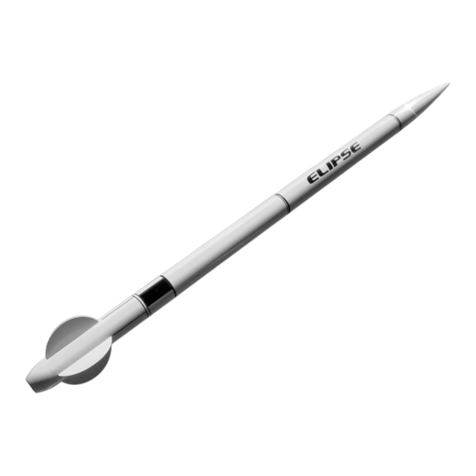
Giant Leap Rocketry
Giant Leap Rocketry Elipse User manual
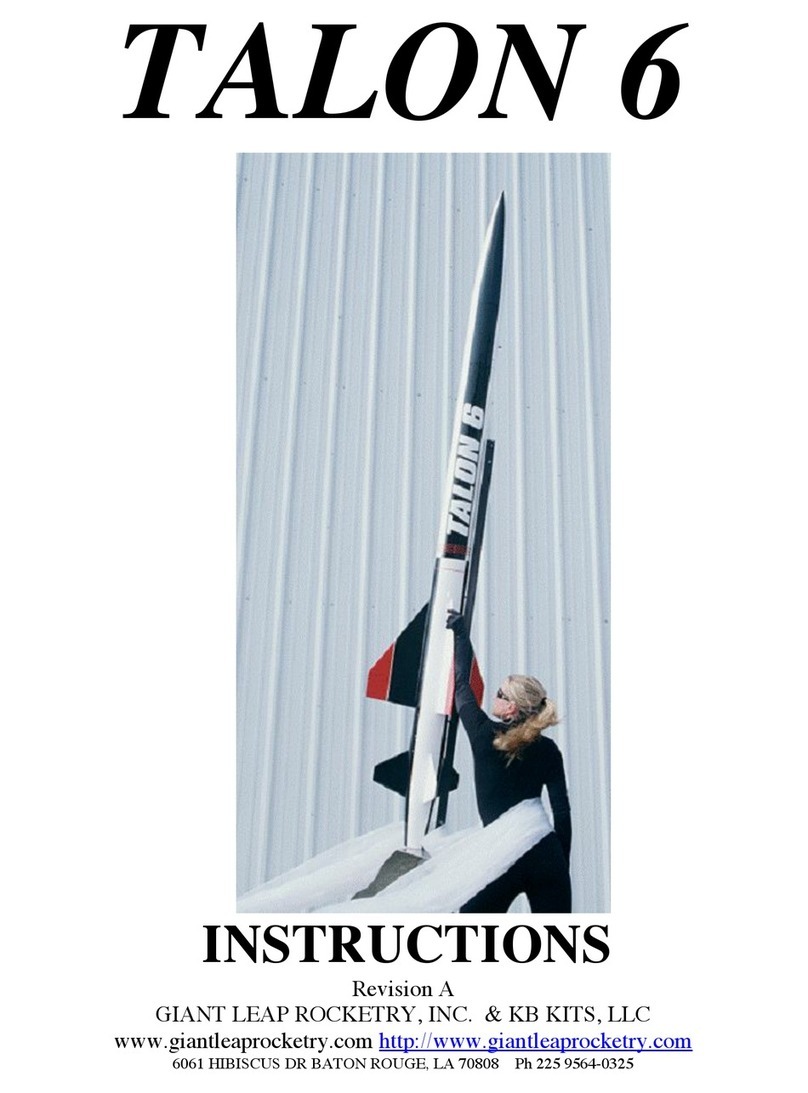
Giant Leap Rocketry
Giant Leap Rocketry TALON 6 User manual
